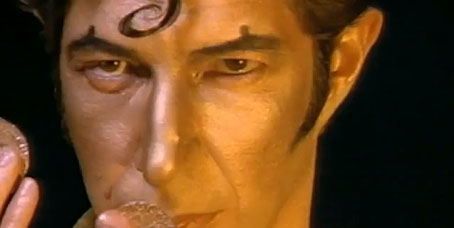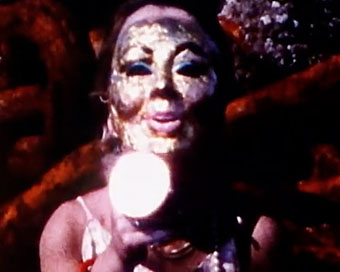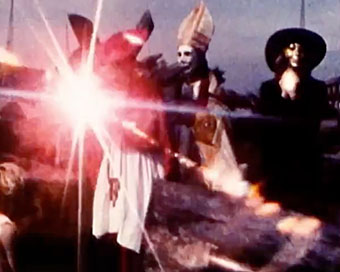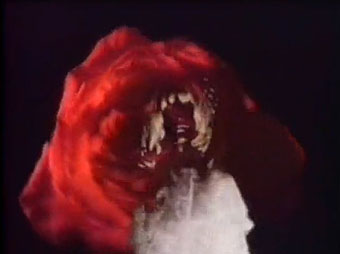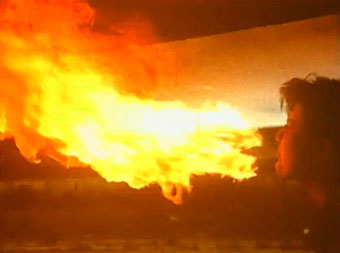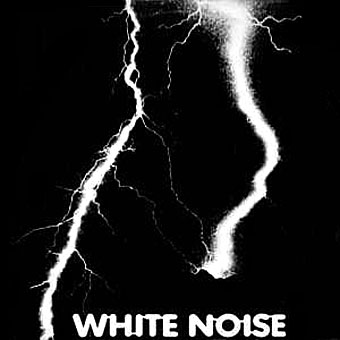Duggie Fields in It’s A Sin
A hidden Derek Jarman film lies scattered among a handful of music videos from the 1980s, something you can pretend you’re seeing flashes of in the promo shorts the director was making whilst trying to raise money for his last few feature films. A recent re-watch of Caravaggio reminded me of these, recalling a remark Jarman made that his video for the Pet Shop Boys’ It’s A Sin was the first time anyone allowed him to use 35mm film. Among other things, that promo features artist Duggie Fields with a gilded face, one of a number of little in-jokes that Jarman aficionados can retrieve from these shorts. Running through them in sequence you get a skate through familiar visuals, from the masks and mirrors flashed into the camera in Broken English, to the Super-8 fast-forwards of The Smiths and Easterhouse films, with plenty of flowers and ritual fires along the way.
Broken English
This isn’t a complete list since not everything is on YouTube. Even if it were I wouldn’t link to anything by the wretched Bob Geldof for whom Jarman made two promos. Needless to say some are more sympathetic to Jarman’s obsessions than others: Marianne Faithfull’s film is a fascinating short that provides a link via the singer between Jarman and Kenneth Anger. The Bryan Ferry film, on the other hand, is a bland piece for a bland song. Suede and The Smiths seemed to have let Derek do what he liked. Well done, boys.
Broken English (1979) by Marianne Faithfull (featuring Witches’ Song, The Ballad of Lucy Jordan and Broken English).
Dance With Me (1983) by The Lords of the New Church.
Willow Weep For Me (1983) by Carmel.
Broken English
Dance Hall Days (1983) by Wang Chung.
Tenderness Is A Weakness (1984) by Marc Almond.
Windswept (1985) by Bryan Ferry.
The Queen Is Dead
Panic (1986) by The Smiths.
Ask (1986) by The Smiths.
The Queen Is Dead (1986) by The Smiths | Long version
1969 (1986) by Easterhouse.
Whistling In The Dark (1986) by Easterhouse.
So Young
It’s A Sin (1987) by the Pet Shop Boys.
Rent (1987) by the Pet Shop Boys.
So Young (1993) by Suede.
Previously on { feuilleton }
• Derek Jarman’s Neutron
• Mister Jarman, Mister Moore and Doctor Dee
• The Tempest illustrated
• In the Shadow of the Sun by Derek Jarman
• Derek Jarman at the Serpentine
• The Angelic Conversation
• The life and work of Derek Jarman

